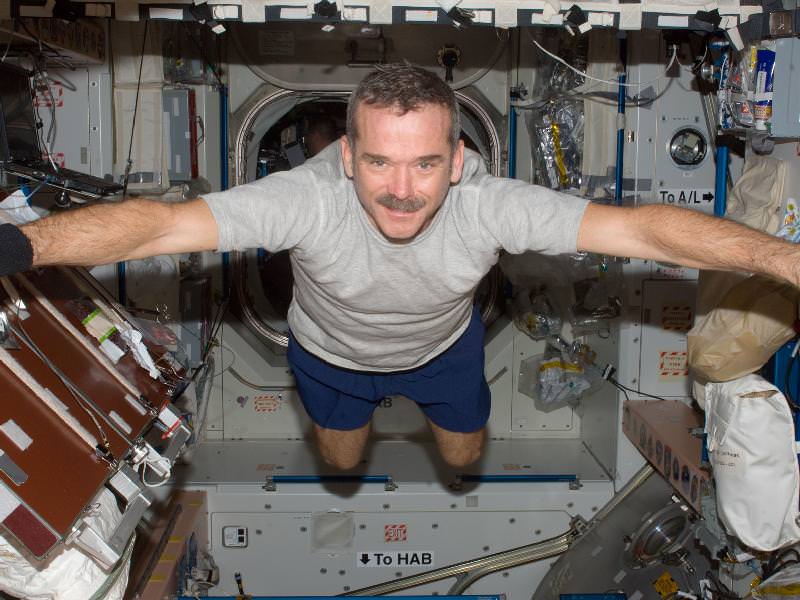Leave it to the well-spoken and articulate Chris Hadfield to explain the importance of the space station in such poetic language. In this interview with NPR this week, Hadfield not only talks about how his recent Expedition to the ISS “went viral” but what else is going on in space besides making music videos.
Listen to the entire interview (7 and a half minutes) below, but the main points about the cost and utility of the ISS are….
WERTHEIMER: Do you think that’s important for the future of the program, to try to make a big extra effort to engage people, when we’re all so concerned about how much it all costs?
HADFIELD: You know, you can’t support the Space Station if you don’t know it exists. People have to know it exists, and see that it serves us at a lot of different levels, everything from understanding how to extinguish flame inside a wall, to the fact that you can record a David Bowie video in weightlessness and thrill, you know, tens of millions of people. All of that is possible up there. You need to make an effort to engage people in it and show them that this is, of all the things that we’re choosing to do with our tax dollars, this is one of the really cool, interesting things. And then they can make their own decision as to whether we should support it or not.
WERTHEIMER: The science has always been interesting, of course, but the thing that I think most people on Earth think about is not going to the Space Station, but going past the Space Station, traveling in space.
HADFIELD: For thousands of years, people sailed in rivers and up and down the coast. And only after they had invented so many things – navigation, food supply, really good sails, ships they could count on – did they turn away from shore and go over the horizon. They had to invent a lot of things first. There may have been people that went over the horizon, but they probably didn’t come back, because they didn’t know enough stuff yet.
And we are, right now, sailing within the sight of shore. We’re trying to figure out all those things as we go around the world, so that when you do fire your engines and go 40 percent faster and leave the Earth, and it’s been really hard to turn around and come back, that you can count on your sailing ship, that it’s going to keep you alive and get you where you want to go. And that’s what the Space Station is. It is the crucible where we’re learning and testing and figuring out all those things so that we can go further, which is inevitably what we’re going to do.
Source: NPR

